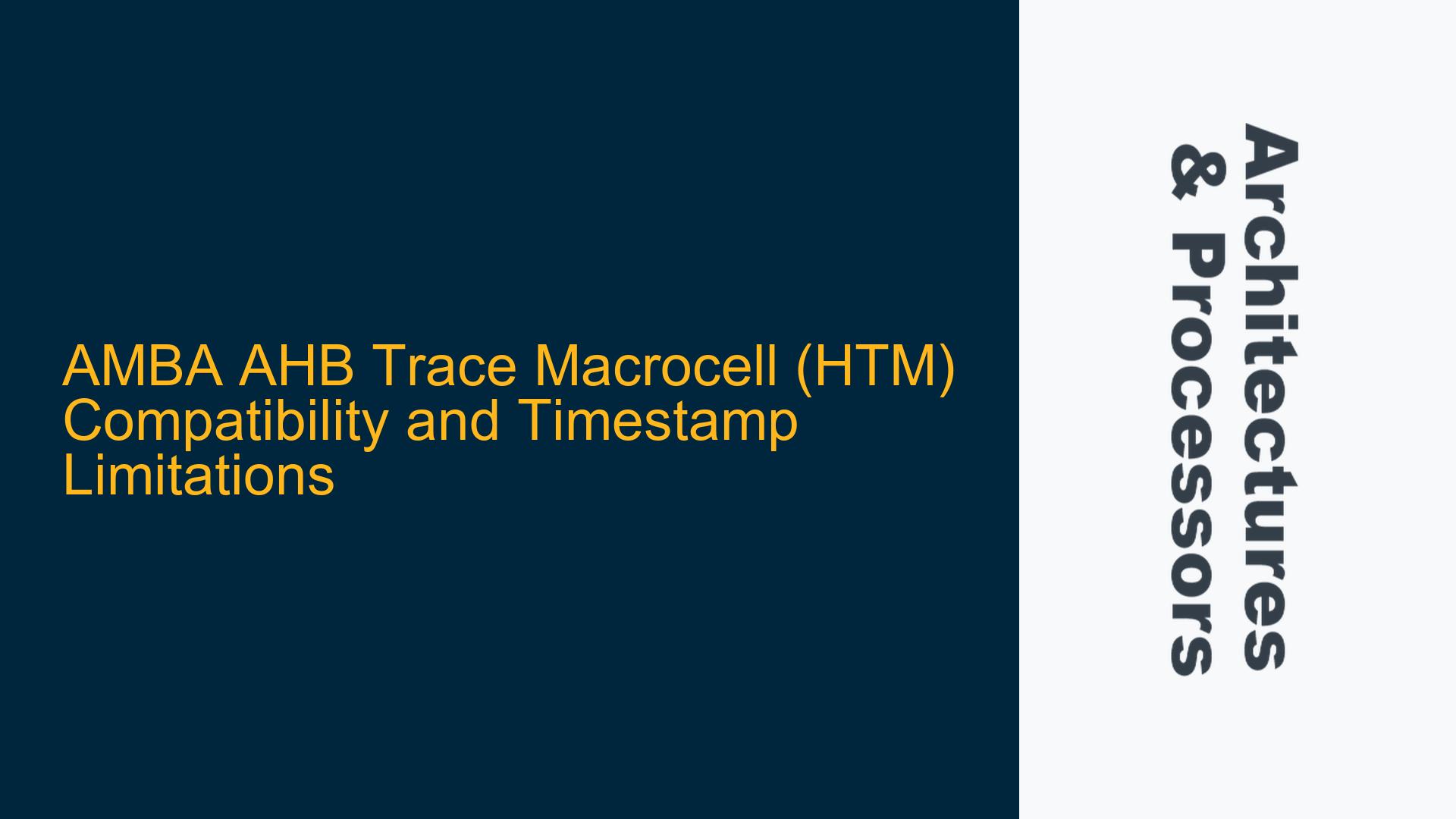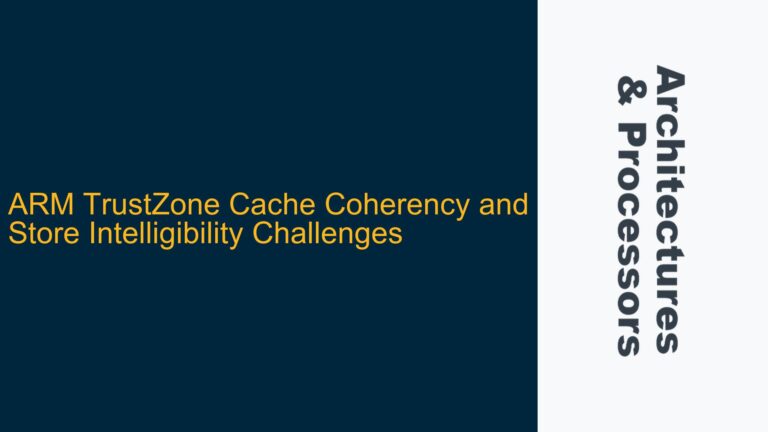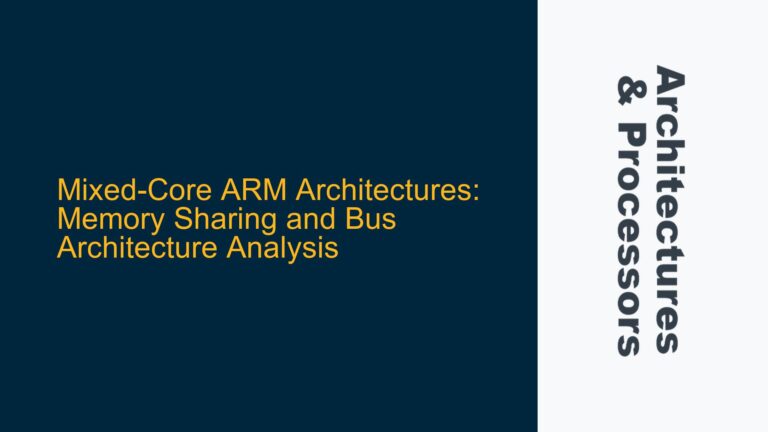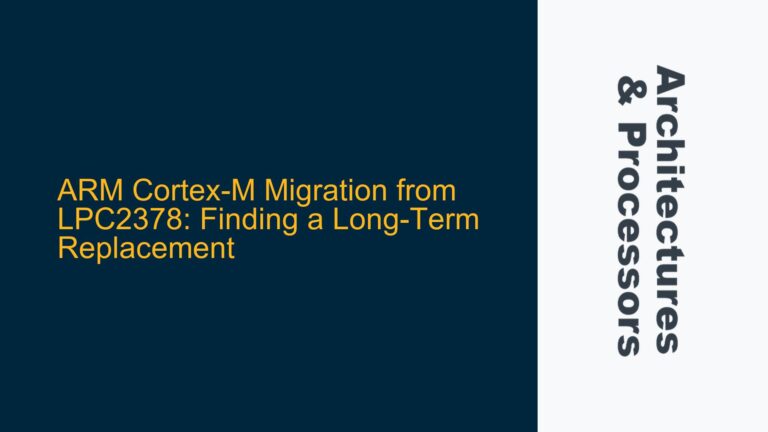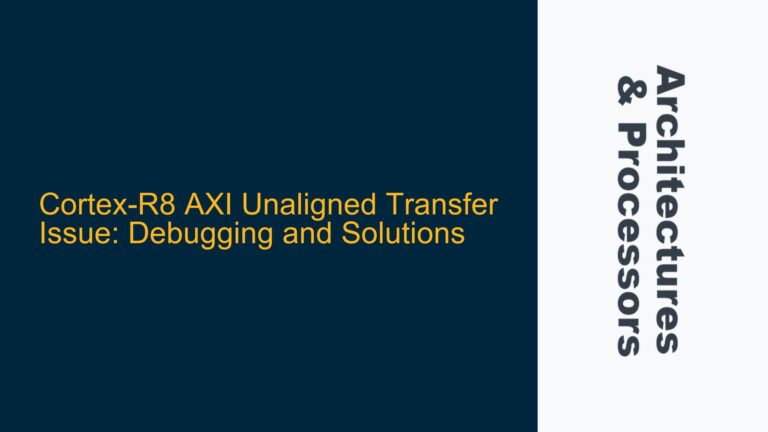AMBA AHB Trace Macrocell (HTM) Compatibility with CoreSight SOC-400
The AMBA AHB Trace Macrocell (HTM) is a specialized component designed to trace transactions on the AMBA AHB bus, particularly for non-core masters such as DMA controllers. The HTM captures detailed information about AHB transactions, including address, data, and control signals, which is invaluable for debugging and performance analysis in complex SoC designs. However, the HTM’s compatibility with modern CoreSight SOC-400 architectures and its lack of timestamp functionality raise significant concerns for designers aiming to integrate it into contemporary systems.
The CoreSight SOC-400 is a more recent and advanced trace and debug architecture from ARM, offering enhanced features such as multi-core tracing, timestamping, and better integration with other CoreSight components. The HTM, being an older component, may not seamlessly integrate with the SOC-400 without additional configuration or modifications. This incompatibility can lead to issues such as incomplete trace data, misaligned timestamps, or even system instability if the HTM and SOC-400 are not properly synchronized.
Moreover, the absence of timestamp functionality in the HTM is a critical limitation, especially in systems with multiple trace sources. Timestamps are essential for correlating events across different trace sources, enabling designers to reconstruct the sequence of events accurately. Without timestamps, it becomes challenging to analyze the interactions between different components, such as a DMA controller and a CPU, particularly in scenarios involving high-speed data transfers or real-time processing.
Memory Barrier Omission and Cache Invalidation Timing
One of the primary challenges in integrating the AMBA AHB Trace Macrocell (HTM) with modern CoreSight SOC-400 architectures is ensuring proper synchronization between the HTM and other trace components. This synchronization is crucial for maintaining the integrity of the trace data, particularly in systems with multiple masters and complex bus hierarchies.
Memory barriers and cache invalidation are critical mechanisms for ensuring data consistency and coherence in multi-master systems. However, the HTM’s lack of timestamp functionality can exacerbate issues related to memory barriers and cache invalidation timing. For instance, if a DMA controller performs a write operation to a memory location that is subsequently read by a CPU, the absence of timestamps can make it difficult to determine whether the CPU read operation occurred before or after the DMA write operation. This ambiguity can lead to incorrect assumptions about the system’s behavior and complicate the debugging process.
Furthermore, the HTM’s inability to capture timestamps can hinder the analysis of cache invalidation timing. In systems with caches, it is essential to ensure that cache lines are invalidated at the correct time to prevent stale data from being used. Without timestamps, it becomes challenging to correlate cache invalidation events with other trace data, making it difficult to identify and resolve issues related to cache coherence.
Implementing Data Synchronization Barriers and Cache Management
To address the challenges associated with the AMBA AHB Trace Macrocell (HTM) and its integration with CoreSight SOC-400, designers must implement robust data synchronization barriers and cache management strategies. These strategies should aim to mitigate the limitations of the HTM, particularly its lack of timestamp functionality, and ensure that trace data is accurate and reliable.
One approach to improving synchronization is to implement data synchronization barriers (DSBs) in the system. DSBs ensure that all memory operations before the barrier are completed before any operations after the barrier are executed. This can help to maintain the correct order of operations and prevent issues related to memory consistency. In the context of the HTM, DSBs can be used to ensure that trace data is captured in the correct sequence, even in the absence of timestamps.
Another critical aspect of addressing the HTM’s limitations is implementing effective cache management techniques. This includes ensuring that cache lines are invalidated at the appropriate times and that cache coherence protocols are correctly enforced. Designers can use techniques such as cache partitioning or cache coloring to manage cache usage more effectively and reduce the likelihood of cache-related issues. Additionally, designers can implement custom trace mechanisms to supplement the HTM’s capabilities, such as adding timestamp information to trace data manually or using external trace components that provide timestamp functionality.
In conclusion, while the AMBA AHB Trace Macrocell (HTM) offers valuable trace capabilities for AHB-based systems, its compatibility with modern CoreSight SOC-400 architectures and its lack of timestamp functionality present significant challenges. By implementing robust data synchronization barriers and cache management strategies, designers can mitigate these challenges and ensure that trace data is accurate and reliable. However, it is essential to carefully evaluate the HTM’s limitations and consider alternative trace solutions that better meet the requirements of contemporary SoC designs.
